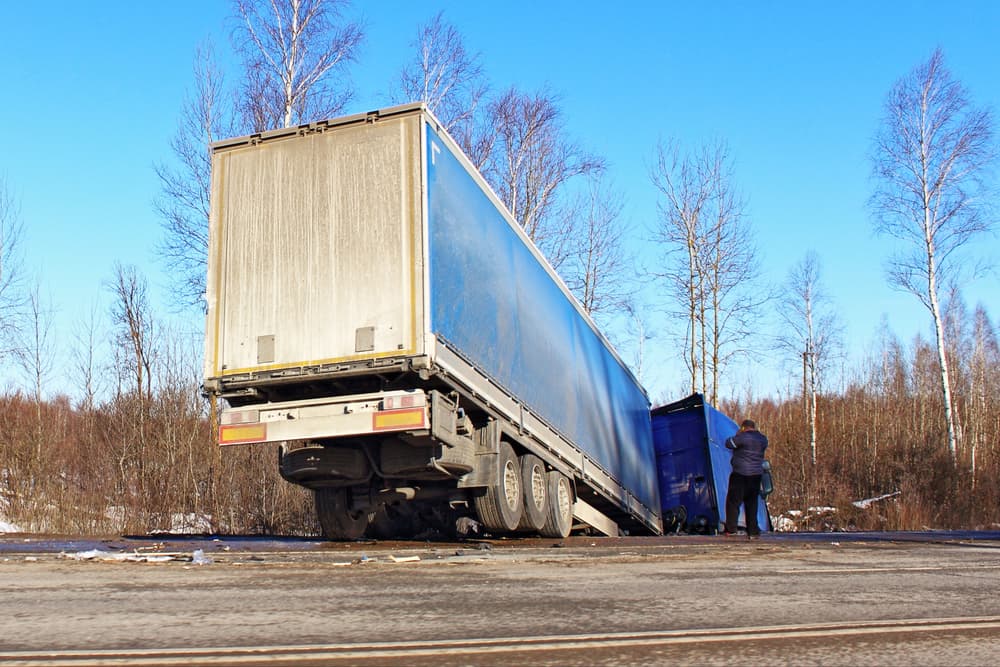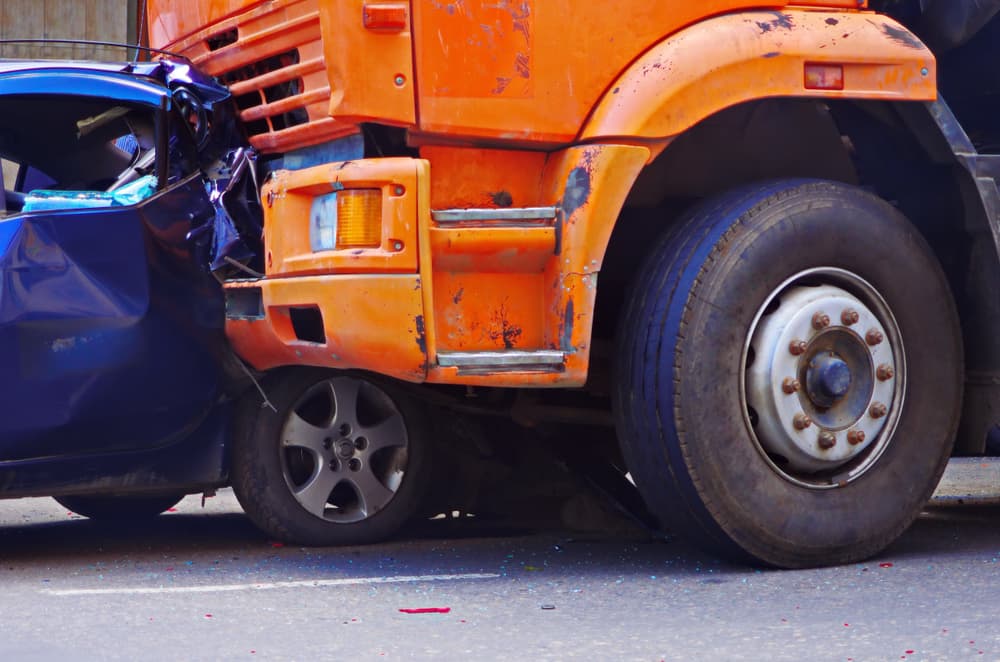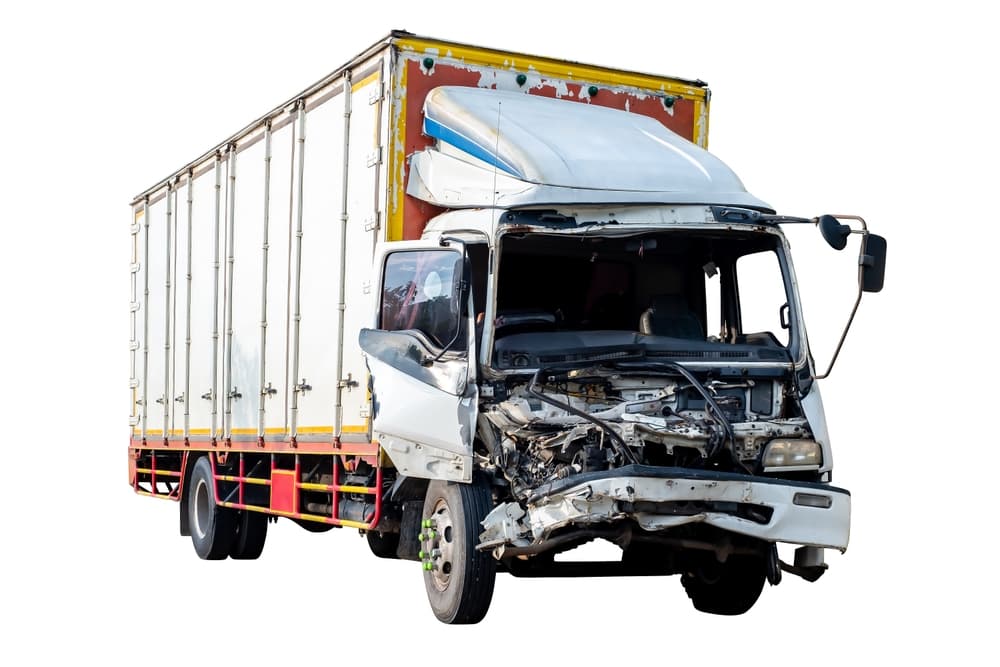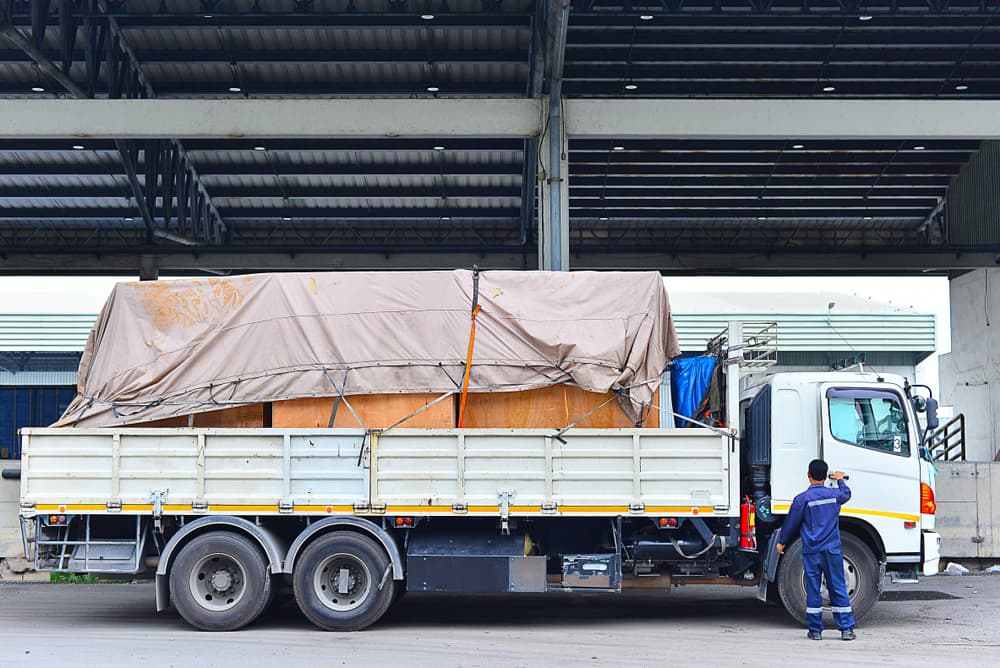There are many different types of truck accidents. All of them can lead to catastrophic injuries and tragic deaths. If you suffered an injury or lost a loved one in a horrible wreck, the kind of accident that occurred can give a skilled truck accident attorney a clue as to who was to blame and who owes you the compensation you deserve.
The following is a look at some of the different types of truck accidents and the potential injuries and legal liability that can stem from them.
Rear-End Collisions
Rear-end collisions are among the most common types of vehicle accidents, and it is no different for commercial truck crashes. While rear-end collisions between smaller vehicles are commonly fender-benders, these collisions can be devastating when they involve a large semi-truck.
Why They Happen
They occur when a truck crashes into the vehicle in front of it. These accidents often happen due to distracted driving, sudden stops, following too closely, or adverse weather conditions that reduce traction and visibility. In truck rear-end collisions, the immense weight and size of the truck can result in significant damage and severe injuries to the smaller vehicle’s occupants.
Common causes include distracted driving, where the truck driver may be using a phone or other device, and sudden stops by the leading vehicle, which can be unexpected and unavoidable. Poor weather conditions can also play a role, as can mechanical failures such as brake malfunctions.
The impact of a rear-end collision involving a truck can be devastating. Victims often suffer from whiplash, spinal injuries, broken bones, and traumatic brain injuries. The force of the collision can also lead to fatalities, particularly in high-speed crashes.
Who is to Blame?
From a legal perspective, determining liability in rear-end collisions often involves assessing whether the truck driver followed traffic laws and maintained a safe distance. An attorney may also hold a trucking company if an investigation shows that poor maintenance or insufficient driver training contributed to the accident. Victims may be entitled to compensation for medical expenses, mental and emotional trauma, lost income, and other damages. A truck accident lawyer can help unravel the complexities of a case, ensuring that victims receive the justice and compensation they deserve.
Jackknife Accidents

A jackknife accident occurs when a truck’s trailer swings out from behind and forms a 90-degree angle with the cab, resembling the shape of a folding knife. This accident typically happens when the truck’s drive wheels lock up, causing the trailer to skid and pivot uncontrollably. The mechanics of a jackknife accident can result in the trailer sweeping across multiple lanes, creating a significant hazard for other vehicles.
Jackknife accidents can occur due to sudden braking, particularly on slippery roads that reduce traction. Inadequate braking techniques, such as locking the brakes, can also contribute to these accidents. Improper loading that causes uneven weight distribution can also increase the likelihood of a jackknife.
Potential Injuries
The consequences of a jackknife accident can be severe. The swinging trailer can collide with nearby vehicles, causing multiple collisions. Common injuries from these accidents include whiplash, fractures, traumatic brain injuries, and internal injuries. The large area affected by the skidding trailer often leads to significant property damage and road obstructions.
Determining Fault
Legally, determining fault in a jackknife accident involves analyzing various factors, such as the truck driver’s actions, road conditions, and vehicle maintenance. They might be liable if a truck driver was speeding, following too closely, or failed to maintain their vehicle properly. Trucking companies can also be responsible if inadequate training or faulty equipment contributed to the accident.
Rollover Accidents
A rollover accident typically involves a truck flipping over onto the side or the roof, often leading to catastrophic outcomes. These accidents are particularly dangerous due to the truck’s size and weight, which can cause severe damage to the vehicle and any surrounding objects or vehicles. Rollover accidents can occur in both single-vehicle and multi-vehicle scenarios.
Several factors contribute to rollover accidents. Sharp turns taken at high speeds can destabilize the truck, particularly if it’s carrying an uneven load that shifts during the maneuver. High speeds and sudden braking can cause a loss of control and increase the risk. Uneven road surfaces or poor weather conditions can also play a significant role in causing rollovers.
The types of injuries sustained in rollover accidents are often severe and may include traumatic brain injuries, spinal cord injuries, fractures, and internal injuries. The violent nature of a rollover can also result in fatalities, particularly if the truck isn’t equipped with proper safety restraints or if passengers are ejected from the vehicle.
Investigating a Rollover Accident
A skilled truck accident attorney determines responsibility in rollover accidents by examining various elements, including the driver’s behavior, road conditions, and vehicle maintenance. If a driver was speeding, taking sharp turns recklessly, or failed to secure their load correctly, they may be held liable. The trucking company might also be responsible if it didn’t properly train its drivers or maintain its vehicles adequately.
Underride Accidents

Underride accidents involve a smaller vehicle, such as a passenger car, sliding under the rear or side of a large truck, often resulting in the top of the smaller vehicle being sheared off. These accidents are devastating since commercial trucks are much larger and heavier than passenger vehicles.
Causes of underride accidents include:
- Sudden stops by the truck.
- Inadequate visibility due to poor lighting or lack of reflective markings on the truck.
- Adverse weather conditions.
Inadequate or malfunctioning underride guards, meant to prevent such incidents, also contribute to the severity of these accidents.
The severity of injuries in underride accidents is often extreme, with a high likelihood of fatalities. Survivors typically suffer from severe head and neck injuries, traumatic brain injuries, and extensive facial trauma.
Identifying the Liable Parties
Underride accidents are among the most challenging types of truck accidents for an attorney. Establishing liability often involves investigating whether the truck was equipped with functional underride guards and if these guards met safety standards. The company that owns the truck may be liable if it didn’t maintain or install appropriate safety equipment. In addition, driver negligence, such as abrupt braking, can also be a factor.
T-Bone (Side-Impact) Collisions
T-bone (side-impact) collisions happen when the front of one vehicle crashes into the side of another, forming a “T” shape at the point of impact. These accidents are common at intersections where one vehicle may run a red light or fail to yield the right of way, colliding with another vehicle crossing the intersection perpendicularly.
Running red lights, failing to yield at stop signs, distracted driving, and impaired driving are among the typical causes of T-bone collisions. Poor visibility due to weather conditions or obstructed views can also contribute to these accidents.
The injuries resulting from T-bone collisions are often severe, particularly for occupants on the side of the vehicle that is struck. Typical injuries include fractures, traumatic brain injuries, spinal cord injuries, and internal organ damage. The severity of the impact can also lead to fatalities, especially in high-speed collisions. Property damage is typically extensive, often resulting in the total loss of the affected vehicles.
Finding Fault
From a legal perspective, determining fault in T-bone collisions usually involves analyzing traffic signal patterns, witness statements, and surveillance footage, if available. The driver who ran a red light or failed to yield is typically at fault. Victims of T-bone collisions may be entitled to compensation for medical expenses, lost income, pain and suffering, and property damage.
Head-On Collisions

As the name implies, a head-on collision involves two vehicles moving in the opposite direction slamming into each other. Due to the high-impact forces involved, these wrecks are among the most dangerous and deadly types of truck accidents.
Common causes of head-on collisions include wrong-way driving, often due to impaired driving or confusion, and mistakes during overtaking maneuvers. Drivers may inadvertently cross the road’s centerline due to distraction, fatigue, or poor weather conditions, leading to a head-on crash. In rural areas, narrow roads and a lack of proper signage can also contribute to these accidents.
The severity of injuries in head-on collisions is typically extreme, given the combined speed of both vehicles at the point of impact. As in other types of truck accidents, injuries in head-on collisions often include spinal cord injuries, fractures, internal injuries, and severe lacerations. These collisions frequently result in fatalities, particularly at higher speeds.
How a Truck Accident Attorney Assigns Fault
Proving negligence in head-on collisions involves demonstrating that one driver was operating their vehicle recklessly or unlawfully, such as driving under the influence, distracted driving, or failing to stay within their lane. Evidence such as witness statements, police reports, and accident reconstruction can be critical in establishing fault.
Tire Blowouts
Tire blowout accidents result from a truck’s tire suddenly bursting, leading to a loss of control and often resulting in serious accidents. These incidents can cause the truck to swerve uncontrollably, sometimes leading to rollovers or collisions with other vehicles.
These types of truck accidents often happen due to poor maintenance, such as failing to check tire pressure and tread depth regularly. Over or underinflation of tires can also lead to blowouts. Road hazards like potholes, debris, and sharp objects can puncture or damage tires, causing sudden blowouts. Overloading the truck can put excessive stress on tires, also increasing the risk of a blowout.
The potential consequences of tire blowouts are severe. The sudden loss of control can lead to multi-vehicle collisions, rollovers, and other dangerous scenarios. Injuries from such accidents are often catastrophic, even fatal. The chaos caused by a blowout can also result in significant property damage.
Trucking Companies and Manufacturers Can Be Liable
Legally, determining accountability in tire blowout accidents involves examining whether the trucking company and driver followed proper maintenance procedures. Trucking companies may face liability if they didn’t maintain their fleet adequately. Drivers can face liability if they didn’t check the tires before getting on the road. Manufacturers can also be responsible if an investigation finds a tire defect.
A truck accident lawyer can help investigate the cause, gather evidence, and pursue claims against all responsible parties to ensure victims receive appropriate compensation.
Lost-Load Accidents

When cargo falls off a truck, it often creates hazardous situations for other road users. The truck’s load can shift, spill, or completely detach, often leading to collisions or obstructions.
Improper loading practices often result in lost-load accidents. These include overloading or unevenly distributing cargo. Another major factor is unsecured cargo due to inadequate use of restraints like straps, tarps, or locks. Poor maintenance of the truck’s cargo area and securing equipment can also contribute to these accidents. Truckers making sudden maneuvers or driving at high speeds can increase the risk of cargo displacement.
The resulting injuries and property damage from lost load accidents can be significant. Other vehicles may collide with the fallen cargo or swerve to avoid it, leading to secondary collisions. Injuries can range from minor cuts and bruises to severe trauma and death.
Loading Companies and Drivers Often Face Liability
Legally, determining fault in lost load accidents involves examining the loading process, securing methods, and adherence to safety regulations. Your truck accident lawyer can hold the trucking company or third-party loaders liable if they failed to follow proper loading protocols. Drivers can also be responsible if negligent driving contributed to the load loss.
Let a Skilled Truck Accident Attorney Help
If you or a loved one has been involved in any of these types of truck accidents, please don’t hesitate to seek legal assistance immediately. Truck accidents can result in severe injuries, extensive property damage, and complex legal challenges. A knowledgeable truck accident lawyer can handle every step of your case, determine liability, and pursue the compensation you deserve.
Don’t wait. Contact a personal injury lawyer today to protect your rights and secure the justice and support you need during this difficult time. The earlier you get legal help, the higher the probability your truck accident attorney can gather the evidence needed to give you the best chance of obtaining the compensation you deserve.
